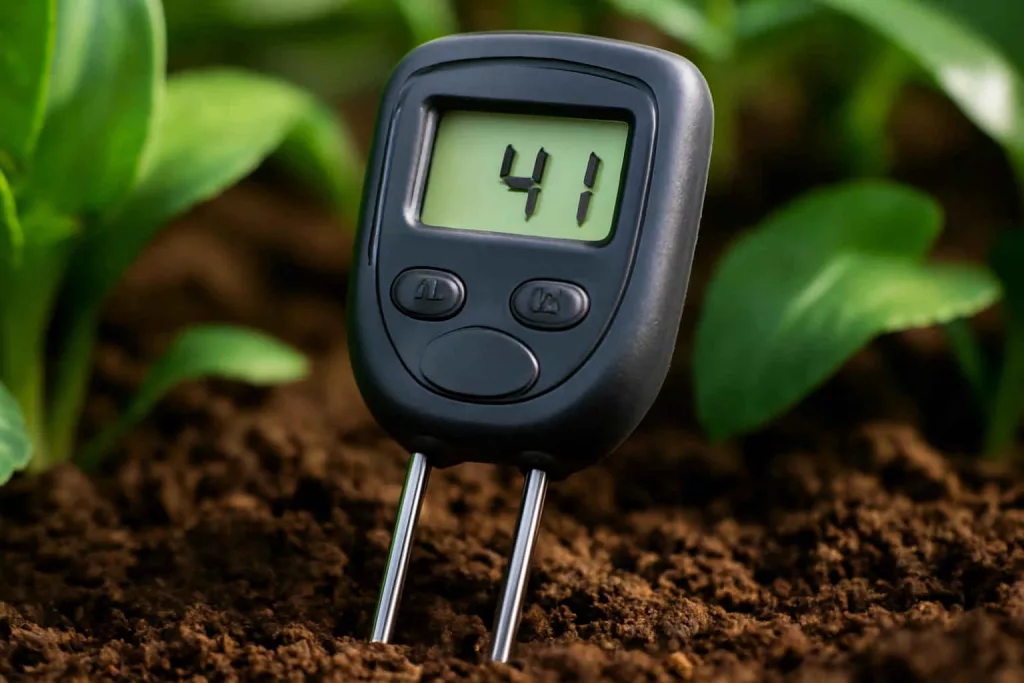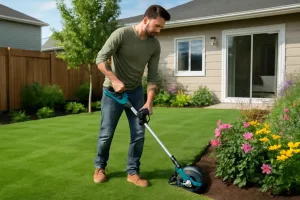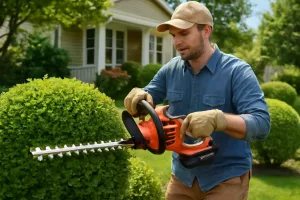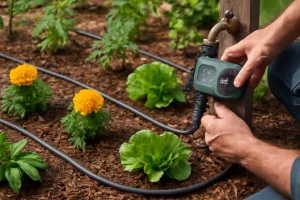Maintaining healthy plants starts with knowing exactly how much moisture is in your soil. A cordless soil moisture meter provides quick, accurate readings so you can water your garden precisely when it needs it. Whether you have a flower bed, raised vegetable planters, or container pots, a reliable battery-powered moisture meter offers convenience and portability. In this guide, we review the top models, explain key features to compare, and provide tips for using and caring for your instrument.
Why You Need a Cordless Soil Moisture Meter in Your Garden
Soil moisture plays a critical role in plant health. Too much water can suffocate roots and promote disease, while too little moisture stresses plants and stunts growth. Here’s why a garden moisture meter is an essential tool for every gardener:
- Precision watering: Avoid overwatering or underwatering by reading exact moisture levels before you water.
- Time savings: Skip the guesswork and check multiple spots quickly to assess evenness of soil moisture.
- Plant variety monitoring: Different plants have specific moisture preferences; a meter helps you meet individual needs.
- Prevent disease: Letting soil dry to ideal levels reduces root rot and fungal growth.
- Efficient irrigation: Pair readings with a drip irrigation system such as best drip irrigation kits for automated, precise watering.
How Cordless Soil Moisture Meters Work
Most battery-powered moisture meters use a pair of metal probes that measure the soil’s electrical conductivity. Moist soil conducts electricity better than dry soil, allowing the meter to estimate moisture level on a scale. While simple models show a color or numeric scale, advanced digital soil testers offer detailed readings and multi-parameter measurement (such as pH and light).
Key Components
- Probes: Stainless steel or fiberglass probes inserted into soil to sense conductivity.
- Display: Analog dial, bar graph, or digital screen showing moisture level.
- Power source: AA/AAA batteries or rechargeable units for cordless use.
- Housing: Weather-resistant casing to protect electronics.
- Additional sensors: Some models include pH or ambient light sensors for full-spectrum garden monitoring.
Top Cordless Soil Moisture Meter Picks
Below are our top battery-powered picks for gardeners seeking reliable, portable moisture measurement. Each model was evaluated for accuracy, ease of use, build quality, and value.
1. AcuRite 00613 Digital Soil Moisture Meter
- Features: Digital display, moisture scale (1–10), probe length 6 inches.
- Pros: Clear numeric readings, battery included, simple one-button operation.
- Cons: No pH reading, limited to moisture-only measurement.
- Amazon Link: Shop AcuRite 00613
2. Sonkir Soil pH Meter, MS02 3-in-1 Soil Moisture Tester
- Features: Measures moisture, pH, and light, dual probe design.
- Pros: Multi-function, no batteries needed, budget-friendly.
- Cons: Lower pH accuracy, analog gauge can be harder to read outdoors.
- Amazon Link: Shop Sonkir MS02 Tester
3. Dr.meter Soil pH and Moisture Meter 3-in-1
- Features: Digital dial, three probes, moisture/pH/light readouts.
- Pros: Fast response, adjustable readability, lightweight.
- Cons: Requires batteries for backlight, probes are delicate.
- Amazon Link: Shop Dr.meter 3-in-1
4. XLUX T10 Soil Moisture Sensor Meter
- Features: Analog scale (1–10), durable stainless probes.
- Pros: Highly accurate moisture readings, rugged construction.
- Cons: No digital screen, pH sensor not included.
- Amazon Link: Shop XLUX T10
5. Atree Soil pH Tester Meter 3-in-1
- Features: Digital display, three sensors, backlight option.
- Pros: Built-in backlight, easy calibration.
- Cons: Slightly bulkier design, batteries required.
- Amazon Link: Shop Atree 3-in-1
6. Luster Leaf Rapitest Digital Soil Moisture Meter
- Features: Digital readout, moisture level LED bar graph.
- Pros: Quick readings, budget price.
- Cons: No pH or light sensor, plastic housing.
- Amazon Link: Shop Luster Leaf Rapitest
7. VIVOSUN Soil pH Meter 3-in-1 Combo
- Features: Slightly angled probes, moisture/pH/light measurement.
- Pros: Ergonomic handle, no battery required for gauge.
- Cons: May require recalibration for pH accuracy.
- Amazon Link: Shop VIVOSUN Combo Meter
8. Grow Care Soil Probe Moisture Meter
- Features: Digital LCD with backlight, three-in-one sensor.
- Pros: Waterproof probes, high readability.
- Cons: Higher price point, needs 2 AAA batteries.
- Amazon Link: Shop Grow Care Soil Probe
Buyer’s Guide: Choosing the Right Soil Moisture Meter
Selecting the best digital soil tester depends on your gardening style, budget, and desired features. Consider these factors before purchasing:
1. Measurement Accuracy
Look for meters with reliable conductivity measurement. Digital displays tend to offer clearer readings. For pH readings, check calibration ease and sensor quality.
2. Probe Length and Durability
Longer probes (6–8 inches) reach deeper root zones, while shorter probes suit potted plants. Stainless steel probes resist corrosion better than cheaper metals.
3. Display Type
Analog dials are simple and battery-free but harder to read. Digital screens offer precise values and backlighting for low-light use.
4. Power Source
Battery-powered models provide cordless freedom. Check battery type (AAA, AA, or coin cell), battery life, and availability.
5. Multi-Functionality
If you want all-in-one monitoring, choose a 3-in-1 meter that includes pH and light sensors. Otherwise, moisture-only meters often offer superior accuracy.
6. Price and Warranty
Basic meters start under $15, while feature-rich digital models range $20–$50. Look for a warranty or satisfaction guarantee for added peace of mind.
How to Use and Maintain Your Soil Moisture Meter
To get the most accurate readings and prolong your meter’s life, follow these best practices:
Proper Insertion Technique
- Insert probes gently to avoid bending or breakage.
- Clean the probe tips after each use to remove soil residue.
- Take readings at several locations and depths for a complete moisture profile.
Calibration and Testing
- For pH-enabled meters, calibrate using standard buffer solutions per manufacturer instructions.
- Test your meter periodically in known moisture conditions to verify accuracy.
Cleaning and Storage
- Wipe probes with a damp cloth; avoid harsh chemicals that damage sensors.
- Store in a dry place away from direct sunlight when not in use.
Integrating Moisture Readings with Garden Irrigation
Combine soil moisture measurements with automated irrigation for optimal watering efficiency. For example, use your readings to program a drip irrigation system and save water. For a complete automated setup, explore our DIY rain barrel irrigation guide to collect and reuse rainwater efficiently.
Conclusion
A cordless soil moisture meter is an indispensable tool for modern gardeners seeking healthier plants and smarter water use. From basic analog testers to advanced digital 3-in-1 meters, there’s a model to fit every need and budget. Armed with accurate moisture readings, you can optimize irrigation, prevent plant stress, and enjoy a thriving garden all season long. Choose one of our recommended moisture meters above or start with the reliable AcuRite 00613 for straightforward moisture monitoring.






